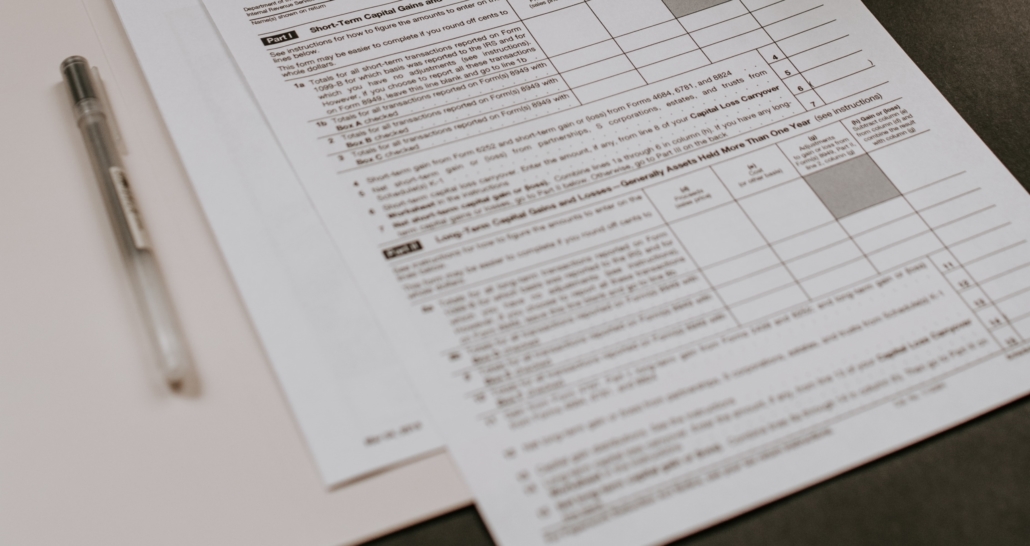February tax news: Understanding trusts, managing partnership returns–and more

REVERSIONARY/REVOCABLE TRUSTS
A trust is a relationship under which a person, called a settlor, contributes cash or other property in trust for the benefit of others, called the beneficiaries. The trust is not a legal person or entity for most purposes, but it is considered a “person” and a “taxpayer” for income tax purposes. The person or persons in charge of administering the trust affairs is called the trustee (or trustees). (The trust has its origins in common law, although the Quebec Civil Code now has a similar concept.)
Trusts are set up for various purposes. For example, you may want to set up a trust with investments for the benefit of your minor children who are not capable of managing the investments themselves. Another example is where a beneficiary is mentally infirm or disabled and unable to manage the investments. But there are a multitude of reasons for setting up trusts, and most are perfectly legal and legitimate.
More generally, a trust allows the settlor and/ or trustee to maintain at least some control over the property. If the property were instead transferred directly to a beneficiary without a trust, that element of control would normally be lost.
In general terms, for income tax purposes, the income of the trust is taxed either to the trust or to the beneficiaries. If the income for a year is retained in the trust, it is normally taxed to the trust. To the extent it is distributed to the beneficiaries, it is normally taxed to the beneficiaries.
So, for example, if the beneficiaries are in a lower tax bracket than the settlor, there could be obvious tax savings.
This all sounds good. But there are many complexities and “traps” that you need to be aware of when setting up a trust. One in particular is this: If you are the settlor of the trust, you could be subject to a rule in Income Tax Act (subsection 75(2). It is sometimes called the reversionary trust or revocable trust rule. It is essentially an income attribution rule that will attribute trust income to the settlor.
The rule normally applies after the settlor contributes property to the trust, if the conditions set out below are met. If the rule applies, any income or loss from the property, and any taxable capital gains or allowable capital losses on the disposition of the property, will be deemed to be that of the settlor. This rule can obviously defeat some of the tax planning reasons for using a trust.
When does the rule apply?
First, subsection 75(2) applies if the property contributed by the settlor to the trust, either directly or indirectly, is held on condition that:
The property may:
- (a) “revert” (go back) to the settlor, or
- (b)pass to persons to be determined by the settlor after the creation of the trust.
The above rule also applies to “substituted property”. For example, it can apply if the original property contributed by the settlor is sold by the trust and the proceeds are used to acquire another property that falls under the above conditions.
Second, the subsection 75(2) rule can apply if the property cannot be disposed of except with the settlor’s consent or in accordance with their direction.
Scenarios where the rule could apply
This is where it gets tricky.
The rule is quite broad. It can apply in the following circumstances if you are the settlor of the trust:
- You are a capital beneficiary of the trust, meaning that the property may eventually go to you as beneficiary. This does not mean that you cannot be a beneficiary. You just have to make sure that the trust terms cannot result in you getting the property. You can receive only income from the trust.
- After the trust is created, you have the authority to determine who gets the property.
- You are the sole trustee of the trust, since in this case you may be able to determine who gets the property or the property might not be disposed of without your consent or direction.
- For similar reasons as above, there are multiple trustees including you, but you have veto power over trustee decisions.
- There are multiple trustees including you, but the majority of trustee decisions must include you as part of that majority.
Exceptions to the rule
Obviously, the rule does not apply if the subsection 75(2) conditions described above are not met. In addition, the rule does not apply in any of the following situations:
- To cash or other property that you lend to the trust, as long as it is a “bona fide” loan.
- If you cease to be resident in Canada.
- After your death.
- To most deferred income plans that are trusts, such as registered retirement savings plans, tax-free savings accounts, and registered education savings plans, among others.
- If you are only an income beneficiary and therefore cannot receive the property / capital from the trust.
- If you are a trustee, but there are multiple trustees and you do not have ultimate control or veto power as discussed above. For this reason, personal or family trusts usually have two or more trustees, unless the sole trustee is someone other than the settlor.
- If you could receive the property from the trust only if it ceases to be a valid trust in law and therefore must be terminated.
Another problem: Potential Tax on Distribution of Property
In most cases, when trust property is distributed to a capital beneficiary, this occurs on a tax-free “rollover” basis. That is, the trust is deemed to dispose of the property at its tax cost, and the beneficiary picks up the same tax cost of the property.
Unfortunately, this rule does not always apply. It may not apply if the subsection 75(2) rule discussed above ever applied to property of the trust.
In such case, if trust property is distributed to a beneficiary other than the settlor or their spouse or common-law partner while the settlor is alive, the rollover will not apply and the trust will have a deemed disposition for fair market value proceeds. This may generate ordinary income or capital gains (or losses). However, if the settlor has died, the rollover can apply for distributions to other beneficiaries.
This non-rollover treatment is quite harsh, as it can apply if any property is distributed to a beneficiary of the trust, even if it is not the property that the settlor contributed to the trust. In other words, if subsection 75(2) ever applied to the trust, any property distributed to a beneficiary will be at fair market value proceeds, unless one of the exceptions noted above applies.

PARTNERSHIP INFORMATION RETURNS
A partnership is not a taxpayer and is not required to file a regular income tax return. Instead, the partners report their shares of the income or loss of the partnership on their income tax returns.
However, in some cases the partnership must file an information return. The Income Tax Regulations require a Canadian partnership (all partners resident in Canada) for a fiscal period or a partnership that carries on business in Canada in a fiscal period to file the prescribed information return for that fiscal period.
Fortunately, the Canada Revenue Agency (CRA) provides some exemptions from the filing requirement.
Filing is not required by a farm partnership made up of only individual (non-corporate) partners. (This rule technically applies only to 2020 and earlier tax years, but the CRA has extended the rule by announcement every year and is expected to announce early in 2022 that the same rule applies to the 2021 tax year.)
Filing is not required if all partners are Status Indians, and the partnership earns all its income at a permanent establishment on a reserve.
More generally, for other partnerships, filing is only required for a fiscal period where:
- at the end of the fiscal period, the partnership has an “absolute value” of revenues plus expenses of more than $2 million, or has more than $5 million in assets;
or
- at any time during the fiscal period:
- the partnership is a tiered partnership (has another partnership as a partner or is itself a partner in another partnership), or
- the partnership has a corporation or a trust as a partner, or
- the partnership invested in flow-through shares of a principal-business corporation that incurred Canadian resource expenses and renounced those expenses to the partnership, or
- the CRA requests in writing that the return is required.
Basically, this means that a partnership with only individual partners that does not exceed the absolute values described above does not have to file the information return (subject to the CRA requesting the return).
In terms of the absolute value requirement, the CRA notes:
“The absolute value of a number refers to the numerical value of the number without regard to its positive or negative sign. To determine if a partnership exceeds the $2 million threshold, add total worldwide expenses to total worldwide revenues rather than subtract expenses from revenues as you would to determine net income.
The cost figure of all assets worldwide, both tangible and intangible, without taking into account the depreciated amount should be used to determine whether a partnership meets the criterion of more than $5 million in assets.”
It is therefore important to remember that the absolute value calculation means adding the revenues and the losses for the fiscal period, not taking the revenues net of the expenses. For example, if a partnership has $1.2 million in revenues and $900,000 in expenses, then absolute value is $2.1 million and the partnership will be required to file the return.
Information required
If the partnership is required to file the return for a fiscal period, the reported information includes:
- the income or loss of the partnership for the fiscal period;
- each partner’s name, address, and business number, Social Insurance Number or trust account number, as the case may be;
- each partner’s share of the income or loss of the partnership for the fiscal period;
- each partner’s share of a deduction, credit or other amount in respect of the partnership that is relevant in determining the partner’s income, taxable income, tax payable or other amount under the Income Tax Act; and
- certain prescribed information if the partnership has made an expenditure in respect of scientific research and experimental development in the fiscal period.
When to file the return
If all the partners are all corporations, the return is due within five months after the end of the fiscal period.
If all the partners are all individuals (which includes trusts), the return is due by March 31 of the calendar year following the calendar year in which the fiscal period ends.
In any other case (for example, some partners are individuals, and some are corporations), the return is due by the earlier of five months after the end of the fiscal period and March 31 of the calendar year following the calendar year in which the fiscal period ends.
Who needs to file the return
Although each partner is responsible for the filing, any one partner can file the return on behalf of all the partners. As the CRA notes: “Once a partner files a return, we consider all partners to have filed it.”

CHILD CARE EXPENSES
Child care expenses are normally deductible for income tax purposes. However, as discussed below, there are some significant restrictions.
Eligible child care expenses
Child care expenses eligible for the deduction include costs for a nanny, day care, and baby sitting. They also include costs paid for a boarding school or camp for child care services, although as discussed below, the amount of these latter costs that can be claimed is limited.
Generally, the expenses must be incurred for the purpose of enabling you or your spouse or common-law partner to carry on employment or a business, or to attend secondary or post-secondary school. (For the remainder of this discussion, “spouse” includes a common-law partner.) For the 2020 and 2021 taxation years, due to the COVID-19 pandemic, if you received federal employment insurance benefits or Québec parental employment insurance benefits or certain similar benefits, the expenses may still qualify if you did not meet this purpose test.
The person or entity providing the child care services normally must be resident in Canada. There are a couple of exceptions to this rule. The first exception is if you are physically residing in another country but remain resident in Canada for tax purposes. The other exception applies if you live near the border of Canada and the US, basically if the US child care provider is closer to your residence than a care provider in Canada.
You must obtain a receipt issued by the child care provider, and if they are an individual, you must obtain their social insurance number if they are resident in Canada.
Eligible child
Your child or your spouse’s child is an eligible child for a taxation year if they are under 16 years of age at anytime during the year, or dependent upon you or your spouse and have a mental or physical infirmity.
Calculation of deductible amount
The general limitation for a year is the least of the following:
- The child care expenses paid in the year;
- The total of the “annual child care expense amounts” for all your children (see below); and
- Two-thirds of your “earned income” for the year.
For item 1), child care expenses paid means your actual expenses paid, subject to a deeming rule that limits your claim for fees paid for attendance at a boarding school or camp. For such fees, regardless of what you actually paid, the allowable amount of the child care expense is limited to:
- $275 per week of attendance if the child is disabled and eligible for the disability tax credit, and otherwise
- $200 per week if the child is under 7 years old at the end of the year
- $125 per week for any other eligible child
For item 2), the annual child care expense amount is
- $11,000 if the child is disabled and eligible for the disability tax credit
- $8,000 if the child is under 7 years old at the end of the year
- $5,000 for any other eligible child
Note that these annual amounts apply based on the number of children you have, even if you are not paying any child care expenses for one or more of the children. For example, if you have a 15-year-old for whom you pay no such expenses, that child still gives you $5,000 of “room”, which you might be spending on a younger child.
For item 3), your earned income includes income from employment or a business, and disability pension under the Canada Pension Plan or Quebec Pension Plan (plus a couple of other miscellaneous items). It does not include passive forms of income like interest, dividends, or capital gains. For the 2020 and 2021 years, because of the Covid-19 pandemic, earned income also includes federal employment insurance and Québec parental employment insurance.
Example
I am a single parent with two healthy children aged 5 and 12. My earned income for the year is $90,000. In the year I incur $18,000 in daycare and babysitting expenses. I also sent my 12-year-old to an overnight camp for two weeks, which cost me $3,000.
My deductible amount is the lesser of:
- $18,000 + ($125 x 2) = $18,250 (the deeming rule for the camp means only $125 per week is allowed for that)
- $8,000 + $5,000 = $13,000
- 2/3 x $90,000 = $60,000
I can deduct only $13,000, even though I incurred more than that in child care expenses. Because of the limitations, many parents end up in this situation.
Further restriction if married or common-law
This is where it gets even more restrictive because the general rule is that only the lower-income spouse can claim the deduction. This rule results in a lower deduction because of the “earned income” limitation. As an extreme example, if the higher income spouse has $90,000 earned income but the lower income spouse has no earned income, there is no deduction (2/3 x $0 is $0).
However, in some cases the higher income spouse can claim a limited deduction. This will be the case if during the year the lower income spouse was either:
- Attending secondary or post-secondary school;
- Incapable of caring for the children because of a mental or physical infirmity and being confined for at least 2 weeks in the year to a bed, wheelchair or as a patient in a hospital; or likely to be for a long, continuous and indefinite period, incapable of caring for children, because of their mental or physical infirmity; or
- In prison for at least 2 weeks in the year.
In any of the above situations, the higher-income spouse can claim a deduction based on the general formula above.
The lower-income spouse may claim a deduction under the general formula, net of whatever the higher income spouse can deduct.
Example
My earned income for the year is $60,000.
My spouse’s earned income for the year is $90,000.
We incurred $20,000 of otherwise eligible child care expenses. We have two healthy children, aged 5 and 12.
During the year, I attended university full-time for 12 weeks.
My spouse, the higher-income earner, can deduct the following amount:
Least of
- $20,000 eligible child care expenses
- $8,000 + $5,000 = $13,000
- 2/3 x $90,000 earned income = $60,000
- ($200 + $125) x 12 weeks = $3,900
I would then use the general formula to calculate my deduction, which would be net of the $3,900 allowed to my spouse.
AROUND THE COURTS
Allocation of partnership profits found to be unreasonable
As mentioned earlier, a partnership is not a taxpayer for income tax purposes. Instead, the partners are taxed on their respective shares of the partnership income.
In most cases, the partners can agree to their allocation of income in their partnership agreement, and the CRA will respect that allocation.
However, a special rule under the Income Tax Act can apply if the partners do not deal at arm’s length – usually meaning that they are related. If their allocation of partnership income is not reasonable based on the amount of their capital contributed to the partnership and their work performed for the partnership, or any other factor that is relevant, the allocation can be changed to whatever a reasonable allocation is in the circumstances.
This rule came into play in the Aquilini case. The taxpayers set up a partnership that carried on a business and had certain investments. They also set up four family trusts that were partners in the partnership. The taxpayers were the other partners. The family trusts contributed only 0.0006% of the total capital contributed to the partnership, but under the partnership agreement they were allocated 99% of the partnership income.
Not surprisingly, the CRA found that the allocation was unreasonable and allocated the partnership income to the partners based on their capital contributions to the partnership. Upon appeal, both courts upheld the CRA’s position.
***
This letter summarizes recent tax developments and tax planning opportunities; however, we recommend that you consult with an expert before embarking on any of the suggestions contained in this letter, which are appropriate to your own specific requirements. For assistance with your tax planning and accounting needs, contact a member of our team.


